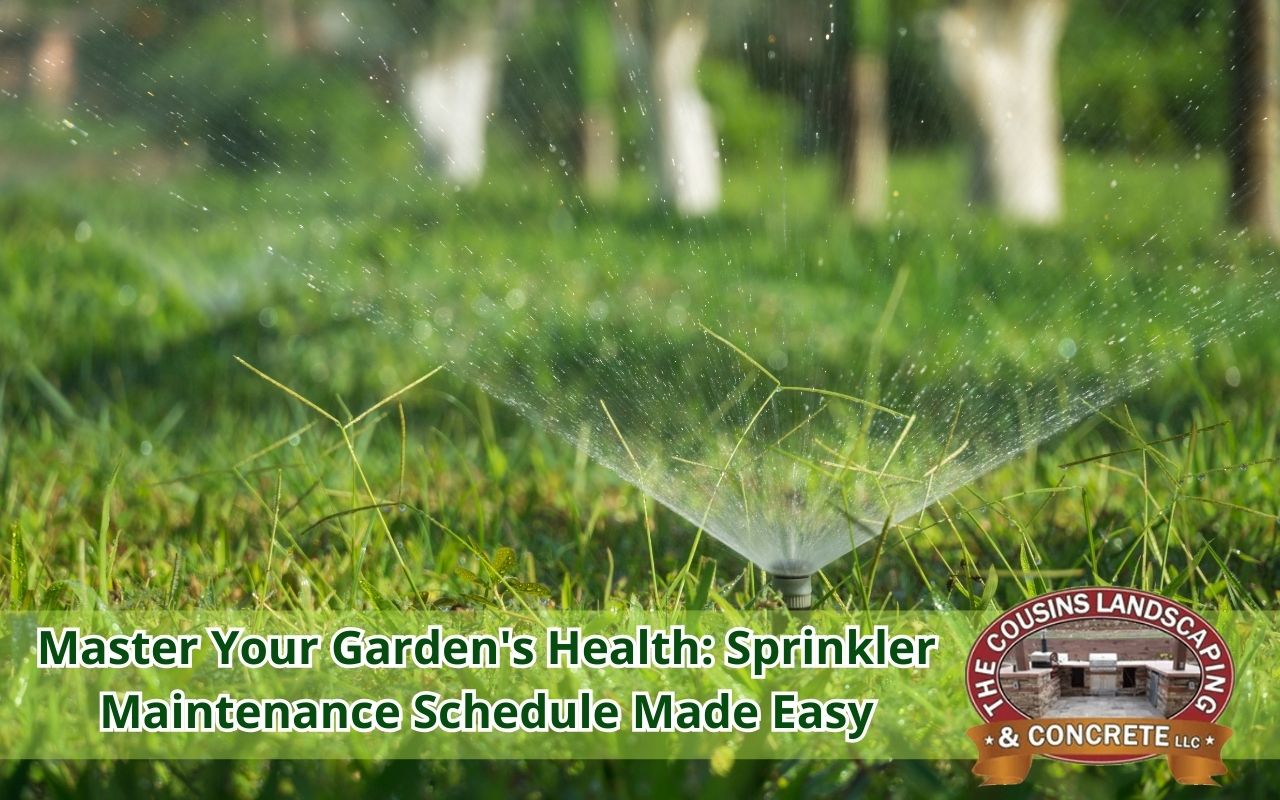
Every gardener knows a thriving garden requires effort. However, the key is a reliable sprinkler system supported by a sprinkler maintenance schedule. With simple steps, you can keep plants hydrated and reduce waste. In contrast, ignoring your sprinklers risks unexpected breakdowns. Fortunately, with a clear schedule, you’ll extend system life and enjoy a vibrant garden. Therefore, let’s explore how to maintain your sprinklers with ease and confidence.
Understanding the Importance of Sprinkler Maintenance
Regular maintenance prevents costly repairs. Moreover, it helps detect leaks, clogs, or other issues before they become serious. Additionally, it conserves water by ensuring even distribution. With proper upkeep, your plants receive the right hydration. Furthermore, it prolongs the lifespan of pipes, valves, and controllers. Above all, it keeps your garden looking healthy and beautiful.
For professional assistance, explore our services to keep your landscape in top condition.
Assessing Your Garden’s Watering Needs
No two gardens share identical watering demands. Therefore, a sprinkler maintenance schedule begins with evaluating your plants. Some plants need deep watering, while others thrive with frequent misting. Likewise, soil type and climate also influence your schedule. For instance, sandy soil dries fast, while clay soil retains moisture longer. Additionally, track local temperatures and rainfall for adjustments. Consequently, group zones by exposure and plant type. This tailored schedule ensures efficient irrigation across your garden.
Creating a Seasonal Sprinkler Maintenance Calendar
A year-round schedule keeps your system aligned with seasonal needs. For example, in spring, check for winter damage. During summer, adjust run times for hot weather. In autumn, reduce watering duration and recalibrate sensors. Finally, winterization protects pipes and valves from freezing. As a result, following these steps ensures your sprinkler maintenance schedule meets changing conditions effectively.
Inspecting and Cleaning Sprinkler Heads
Clogged nozzles cause uneven watering. Therefore, as part of your sprinkler maintenance schedule, inspect heads monthly. Moreover, remove debris, rinse parts, and clear small openings carefully. After cleaning, test the spray pattern. Consequently, consistent upkeep ensures uniform coverage and supports healthy plants without costly tools or services.
Checking for Leaks and Repairing Them
Leaks silently waste water and damage soil. Thus, a complete sprinkler maintenance schedule includes routine leak checks. Walk each zone after watering to spot puddles or soggy areas. Then, tighten fittings, replace washers, or repair cracked pipes promptly. In this way, early detection saves money and preserves your landscape’s integrity.
Monitoring Water Pressure and Adjusting as Needed
Too much pressure damages sprinklers. On the other hand, too little causes weak coverage. Therefore, your sprinkler maintenance schedule should include regular pressure tests. Use a gauge and adjust regulators as required. In conclusion, this step protects your system and guarantees efficient watering throughout your property.
Calibrating Your Sprinkler System for Efficiency
Calibration ensures water is distributed properly. To begin, place containers, run a test cycle, and measure results. Then, use the data to adjust controller times. Moreover, repeat seasonally to account for pressure changes. As a result, a disciplined sprinkler maintenance schedule maximizes water savings and improves root health.
Winterizing Your Sprinkler System
Cold temperatures can damage pipes and valves. Therefore, before winter, drain or blow out residual water. Additionally, store controllers indoors and insulate exposed parts. This precaution is vital in your sprinkler maintenance schedule. Ultimately, winterizing ensures your system is safe and ready for spring.
Troubleshooting Common Sprinkler Issues
Sprinklers may misalign, crack, or fail. Nevertheless, regular walkthroughs reveal these issues early. Consequently, replace damaged nozzles, check wiring, and adjust spray arcs. Troubleshooting as part of your sprinkler maintenance schedule keeps your garden green and minimizes water waste.
Frequently Asked Questions
How often should I service my sprinkler system?
Typically, follow a quarterly sprinkler maintenance schedule. This includes spring start-up, mid-season checks, and fall winterization. Therefore, you stay ahead of potential problems.
What is the best way to adjust watering times for seasonal changes?
Seasonal recalibration is essential. For instance, lengthen cycles in summer heat, shorten them in cooler months, and monitor weather regularly. As a result, your plants receive the right hydration year-round.
Can I perform maintenance tasks myself, or do I need a professional?
Many tasks, like cleaning heads and checking pressure, are DIY-friendly. However, for complex issues, hire an irrigation specialist to avoid costly errors.
How do I know if my sprinkler heads need replacing rather than cleaning?
If cleaning fails or heads show cracks, replacement is the better option. Therefore, schedule inspections to detect issues early and avoid damage.
Is it necessary to calibrate every zone separately?
Yes. Each zone differs in output. Consequently, a tailored sprinkler maintenance schedule ensures balanced watering across all areas.
Simplify Your Garden Care Routine with Consistent Sprinkler Maintenance
A consistent sprinkler maintenance schedule saves water, time, and stress. Moreover, seasonal tasks build a healthy routine for your system. In conclusion, stay consistent, and your garden will thrive year-round. For expert help, contact us today through our contact page. We proudly serve areas like Brighton, CO and Aurora, CO, offering professional landscaping and irrigation care.
